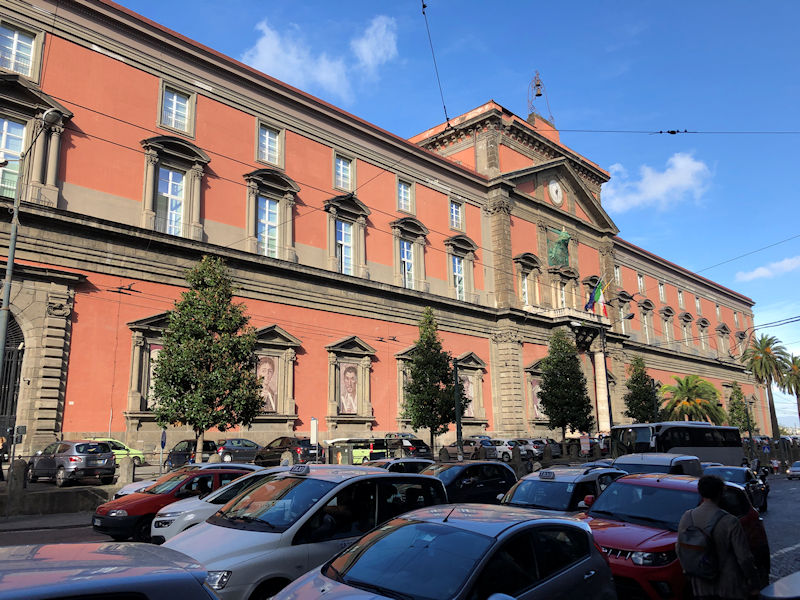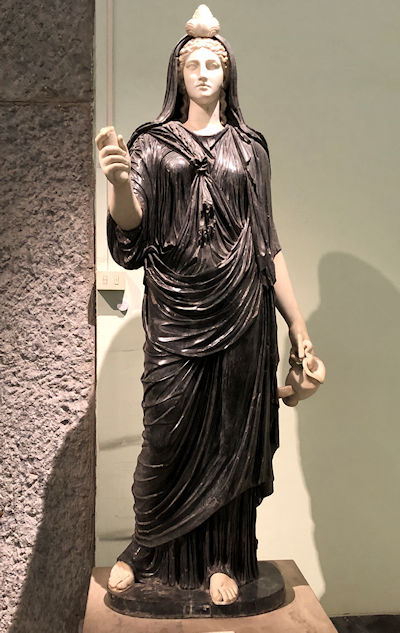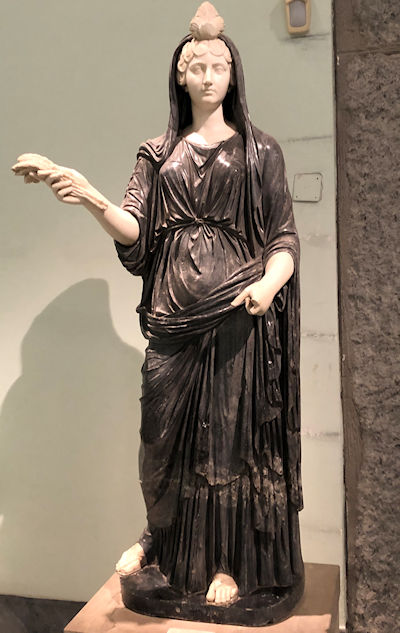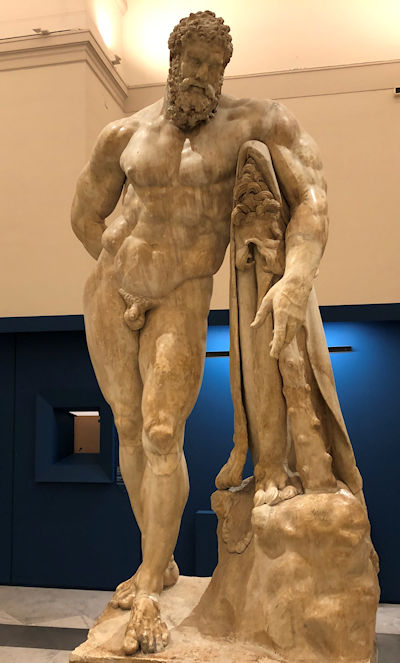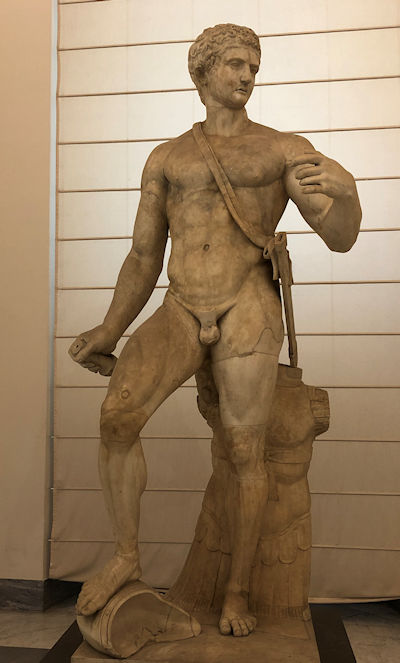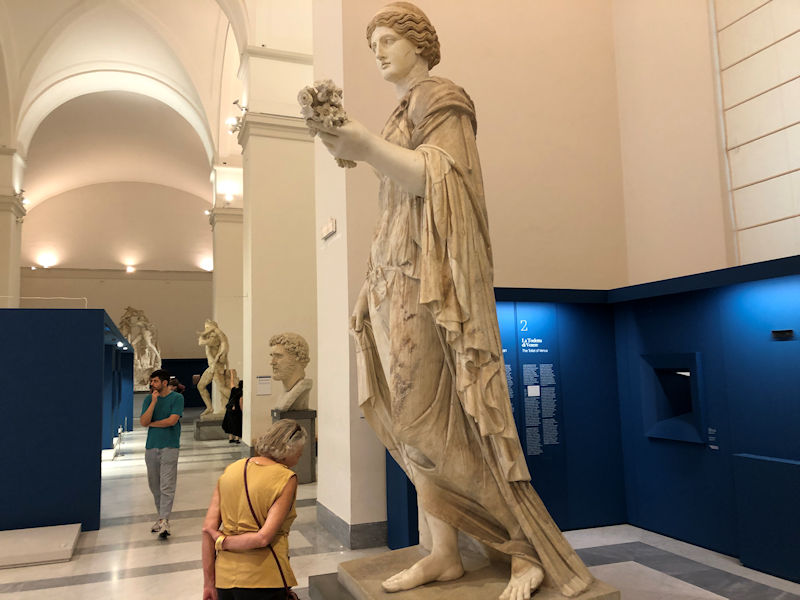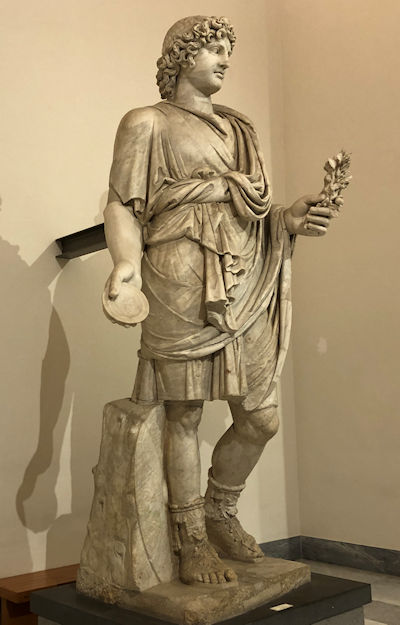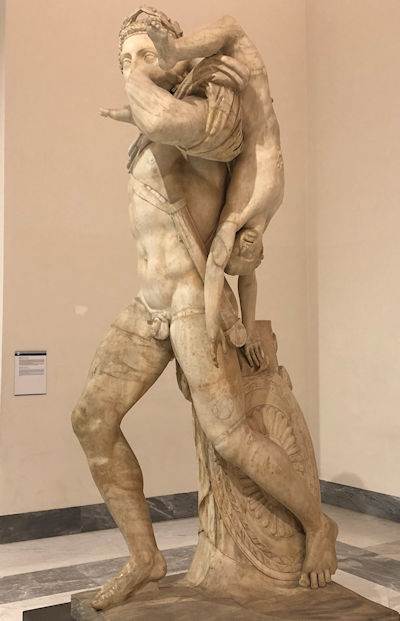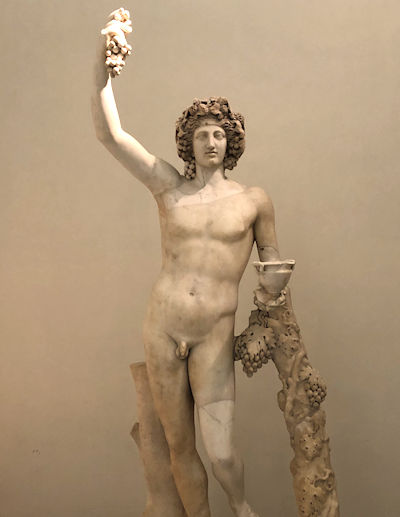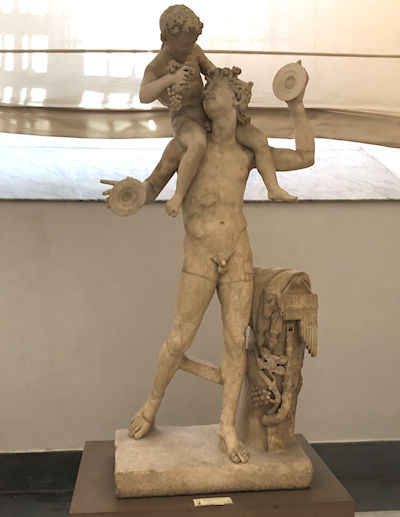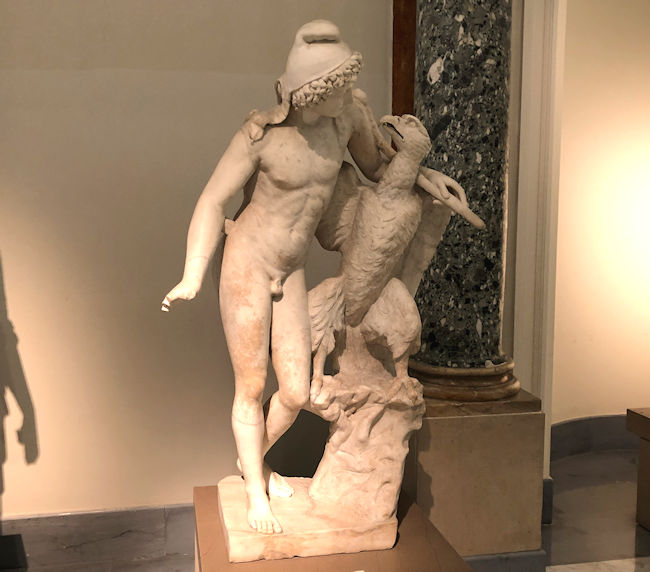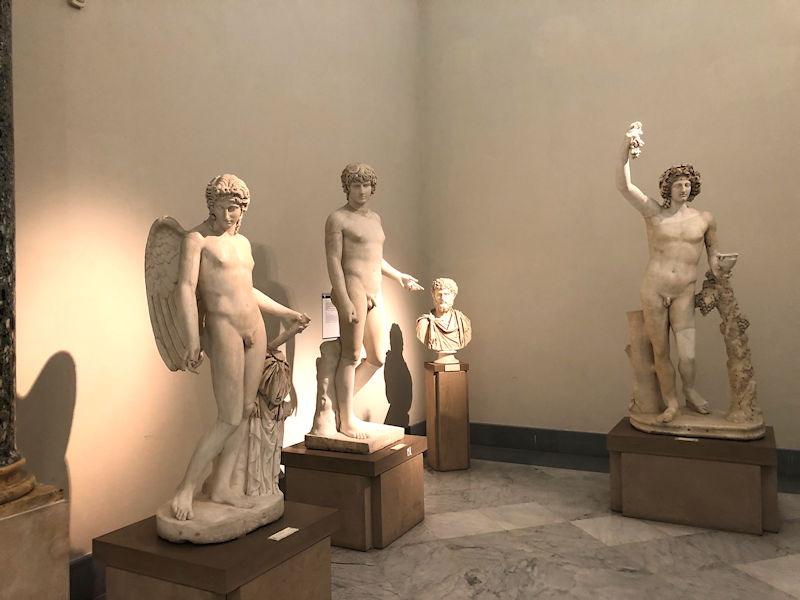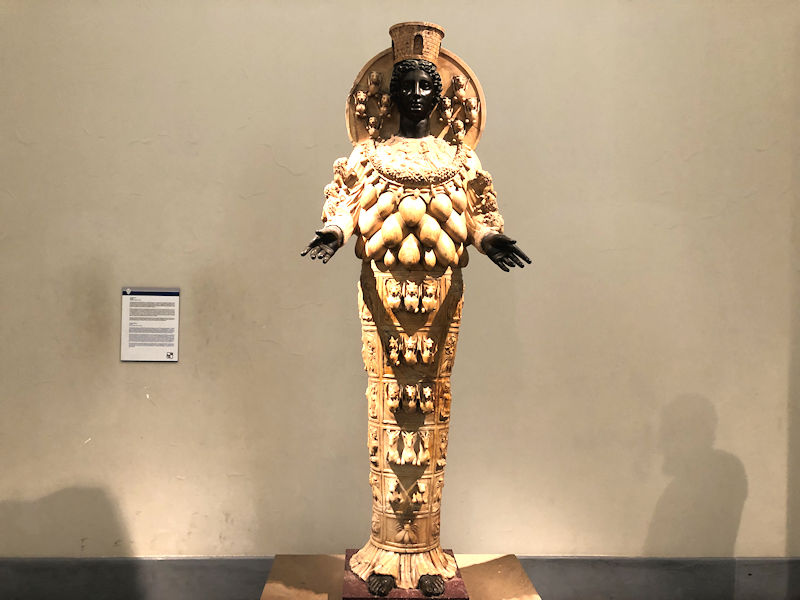You may not find this terribly rewarding unless you're included here, so this is a good time for casual and random browsers to turn back before they get too caught up in the sweep and majesty of the proceedings and can't let go.
The Museo Archeologico Nazionale di Napoli was, according to Wikipedia, built as a cavalry barracks in 1585, but became the base of the University of Naples from 1616 to 1777. It was turned into a repository for the Royal Bourbon Museum (the Real Museo Borbonico) in 1816, built around the 'Farnese Collections' originally of the Farnese family, begun by Alexander Farnese, Pope Paul from 1534, and continued by his descendants in their palaces and villas in Rome, Parma, Piacenza, and elsewhere.
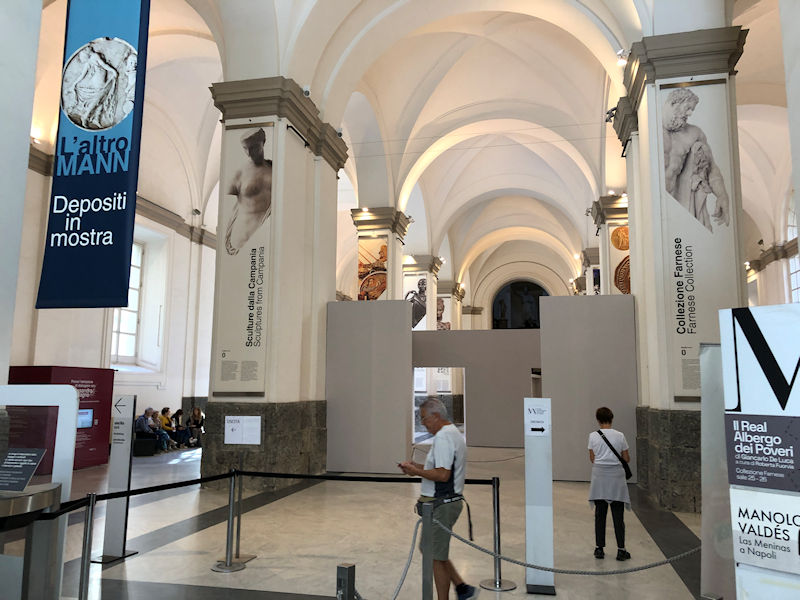
When the direct Farnese line ended with Elisabeth Farnese, married to the Bourbon King Philip V of Spain, their son Charles became Duke of Parma in 1731, but traded this in the Treaty of Vienna of 1738 for Naples and Sicily; by the terms of the treaty he was confirmed in having taken the Parmasan parts of the Farnese Collections to Naples in 1734. When this Charles VII of Naples (and V of Sicily) succeeded his father as King Charles III of Spain in 1759, he named his young son Ferdinand to the crown of Naples in that year.
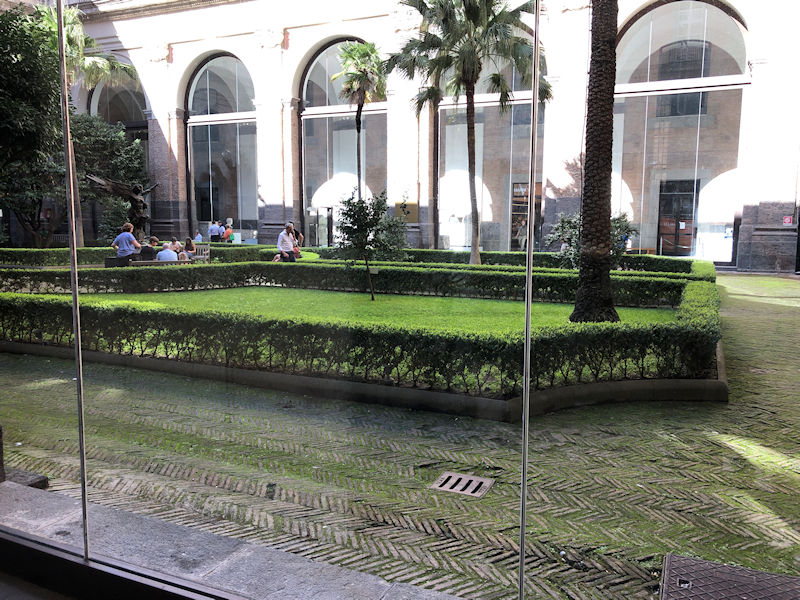
King Charles had removed nearly all of the art works of the Farnese Dukes of Parma and Piacenza to Naples in 1734, and the young King Ferdinand IV transferred the Roman portions of the collections in 1787 to be joined in a Royal Bourbon Museum when he became King of the Two Sicilies in 1816. Eventually, most of the paintings have been tranferred to the Museo di Capodimonte up the hill, whilst most of the sculptures have remained in the Archaeological Museum -- some other works have been returned to the Farnese Palace in Piacenza and the National Gallery of Parma in the Pilotta Palace, and some to the British Museum.
Under the new regime of Charles' younger brother Duke Philip, founder of the cadet branch of the Bourbon-Parma, and for centuries afterward, Parma's own museum in the Pilotta has been wonderfully built up again almost from scratch.
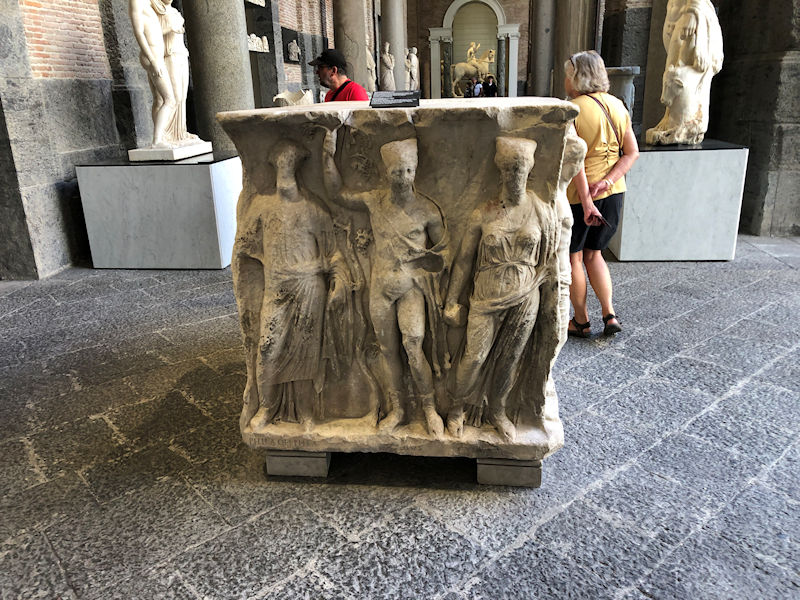
-- Welcome. Can we see your tickets please?
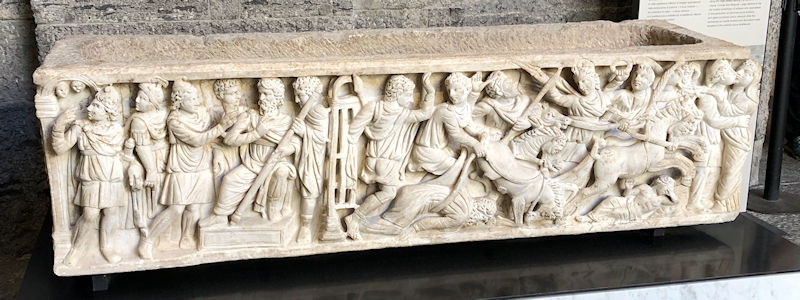
A conventicle of sarcophagi
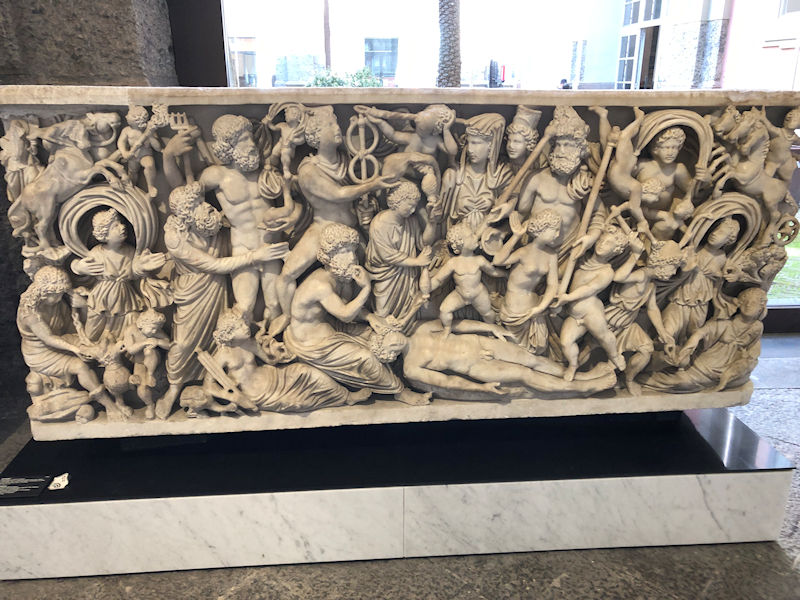
The creation of humanity by Prometheus, with lots of deities attending. From a mausoleum in Puteoli, early 4th century AD
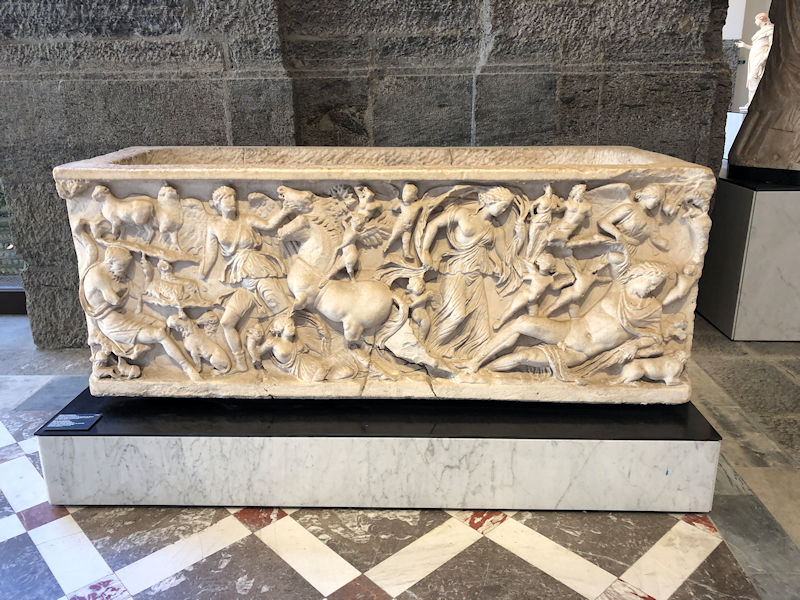
Selene and Endymion ('Deities and shepherds observe the meeting between Selene and her beloved Endymion who is eternally asleep'), Sant'Antimo castle, Naples, first half of 3rd century AD
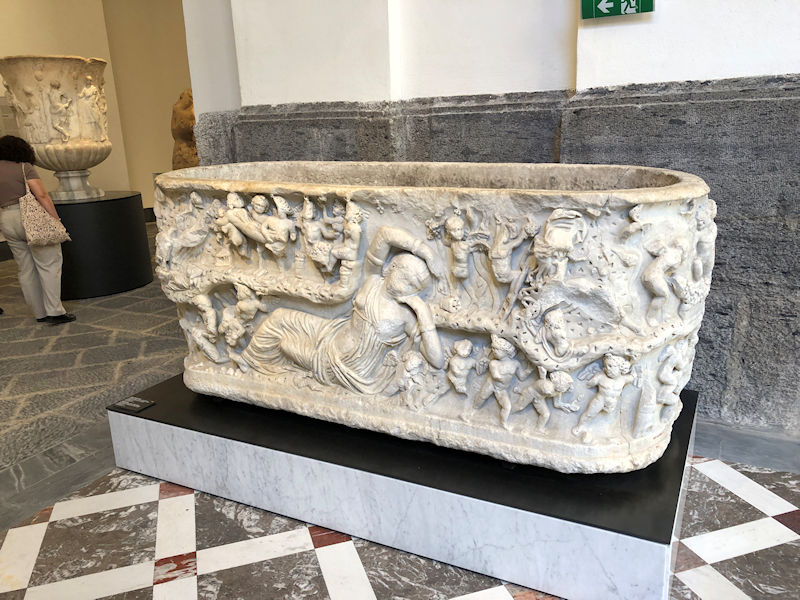
Ariadne asleep ('the deceased is depicted in the pose of Ariadne asleep in Naxos, surrounded by Erotes' [winged gods, part of Aphrodite's retinue]. Salerno, late 3rd century AD
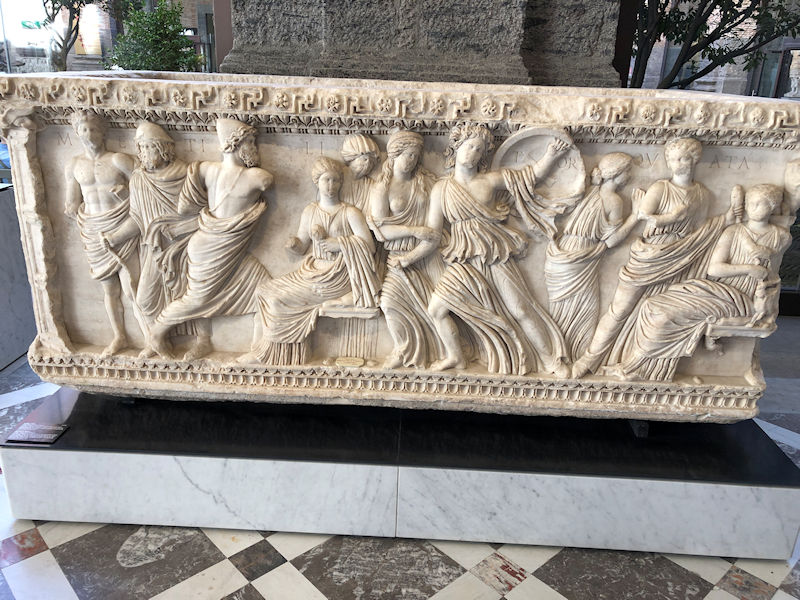
'Achilles in Skyros': 'Achilles, dressed as a woman among the daughters of King Lycomedes, takes the weapons from Odysseus'. [But why?] Atella (Potenza), late 2nd century AD
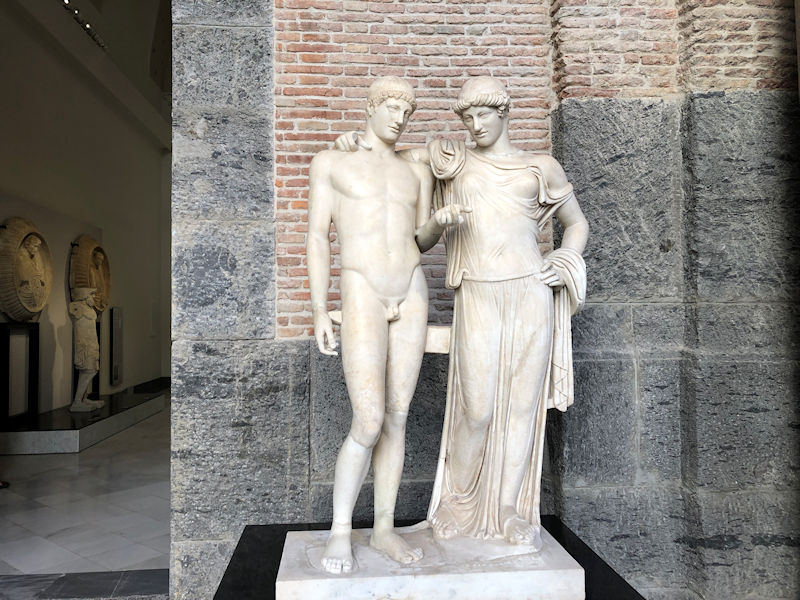
Orestes and Electra (chatting), from the 'Temple of Serapis' in Puteoli, late 1st century BC
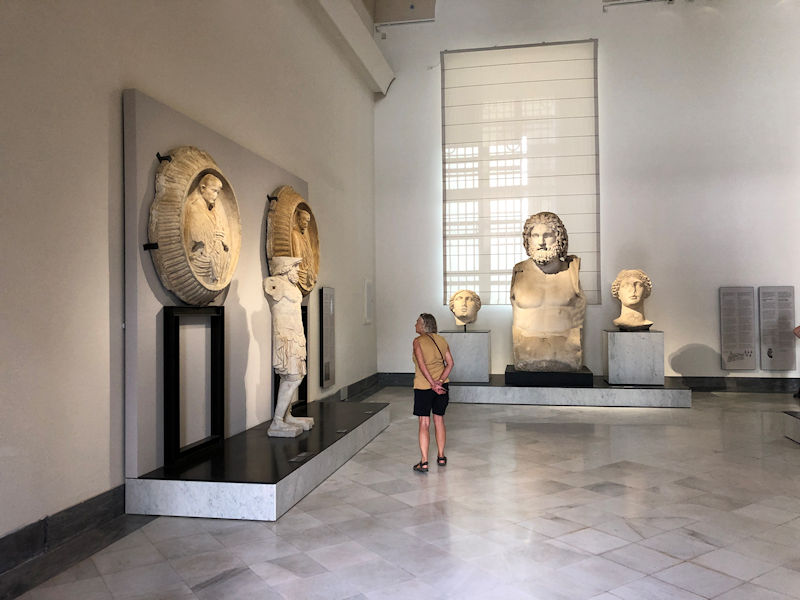
Plenty of room for contemplations
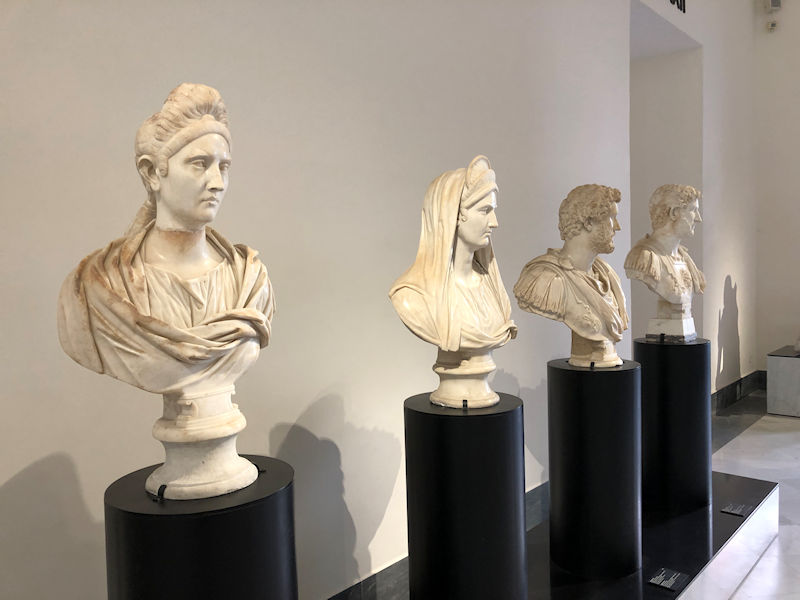
Nobody ever seems to be smiling
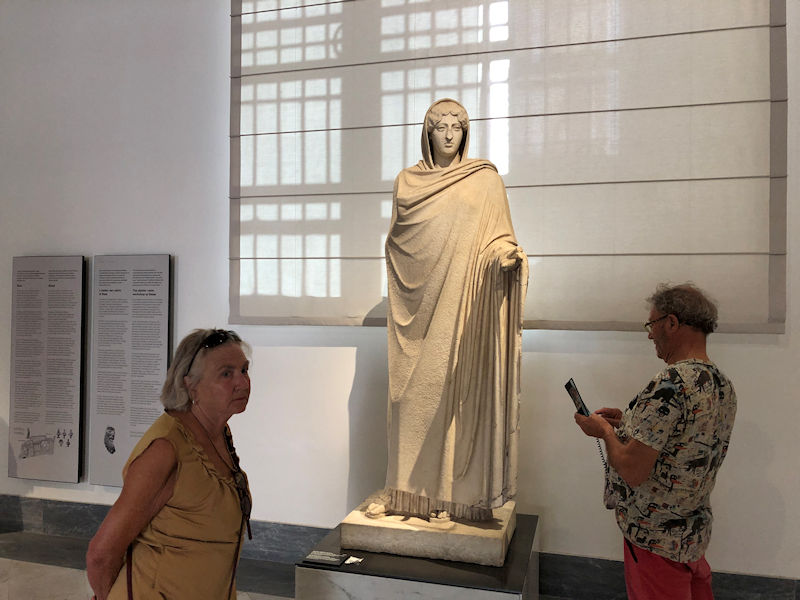
-- Brother, can you spare a dime?
(An Aphrodite copy from the early 2nd century AD of a 5th century BC work from Baiae)
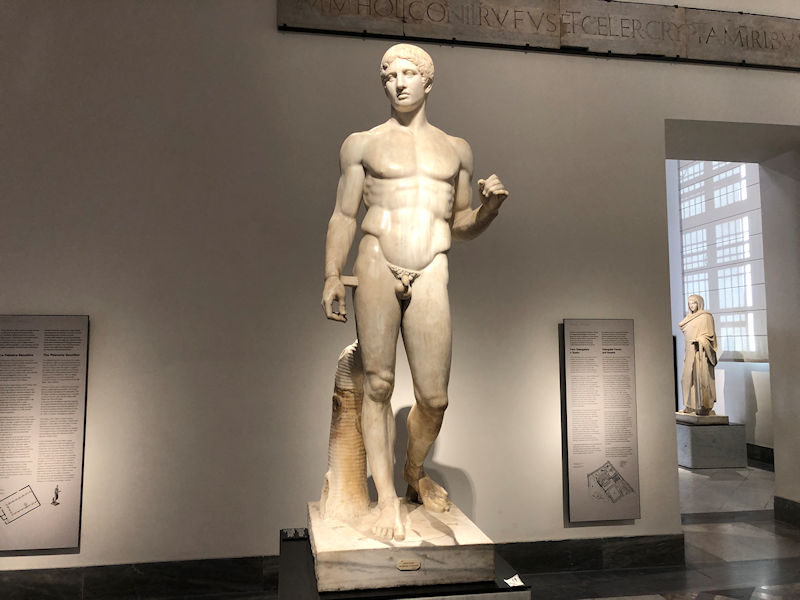
A hero with a (missing) spear on his left shoulder, 'one of the best copies of the masterpiece by Polykleitos (5th century BC)'. Pompeii, 2nd-1st century BC [Pssst, not the only thing he's missing, yeah?]
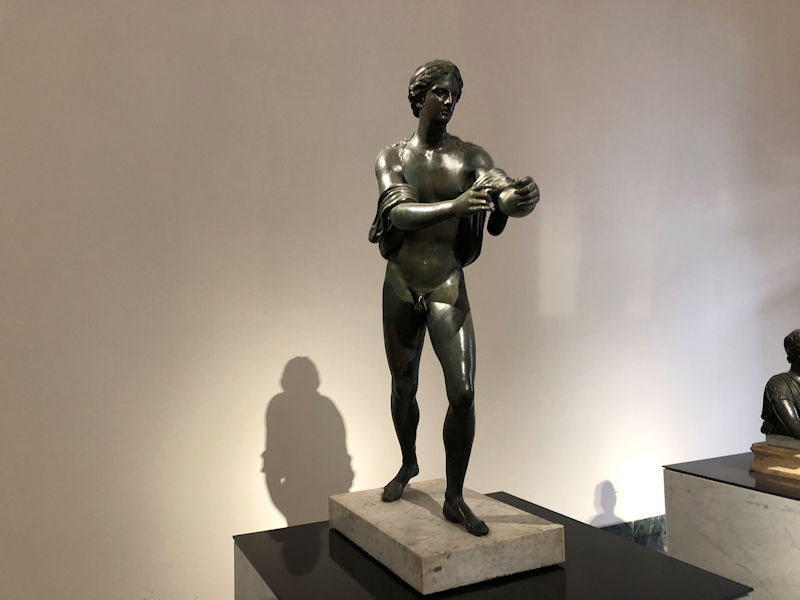
Apollo shooting an arrow (sans bow, arrow, and trousers). Pompeii, Temple of Apollo, 2nd century BC
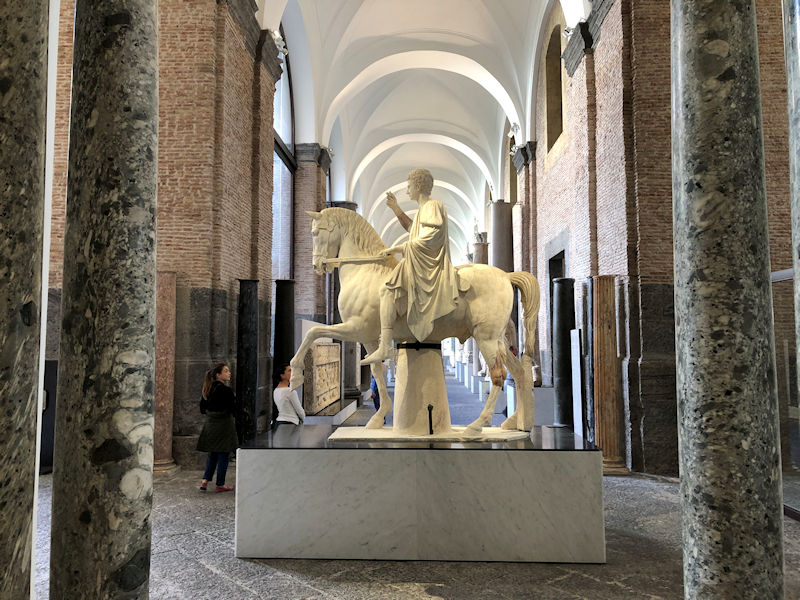
Marcus Nonius Balbus on a horse. Herculaneum, public area, ca. 20 BC (He was lauded as a very generous rich citizen.)
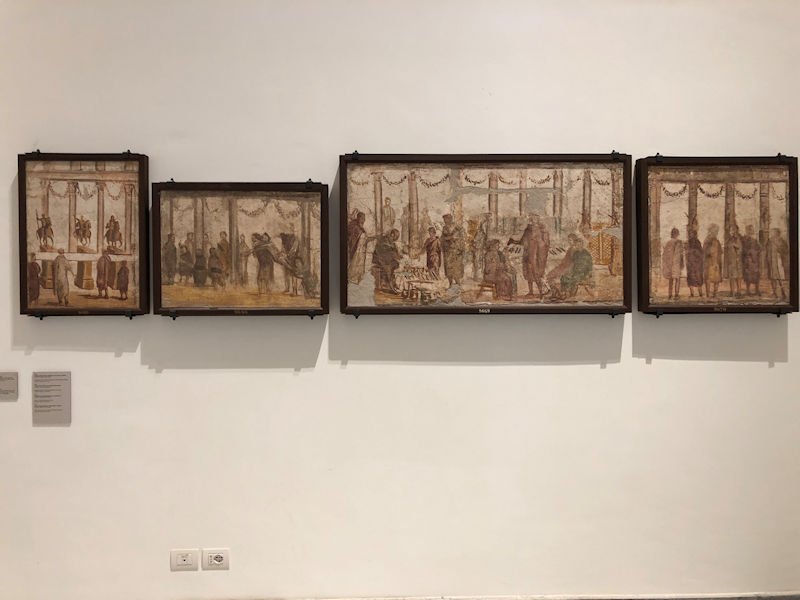
Here are a few of about a quintillion frescoes, mostly from Pompeii.
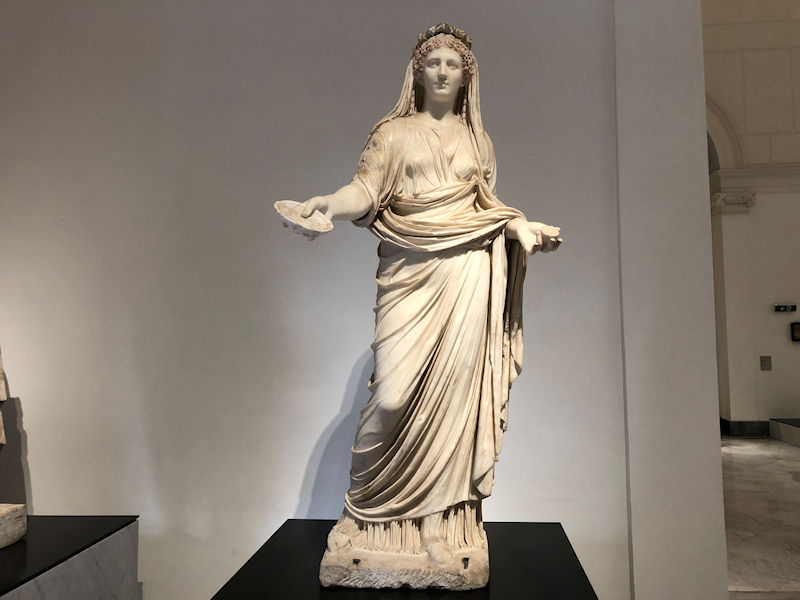
'Priestess known as Livia', based on the clothing and accessories. From Pompeii, Macellum, third quarter of the 1st century AD
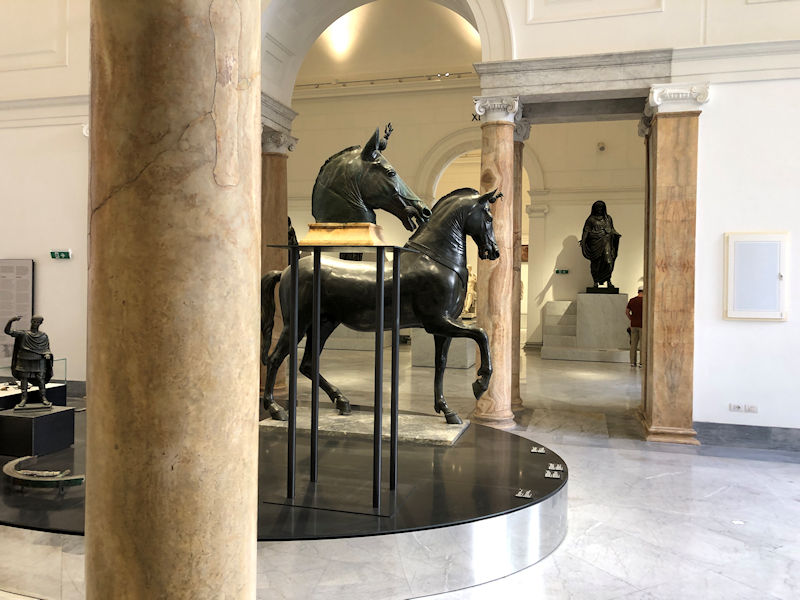
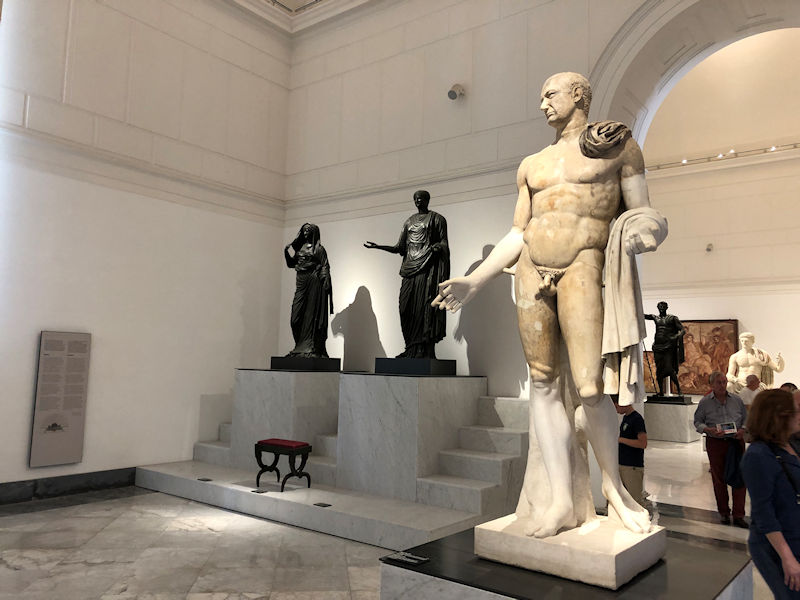
Bunches of identifiable statues, like . . .
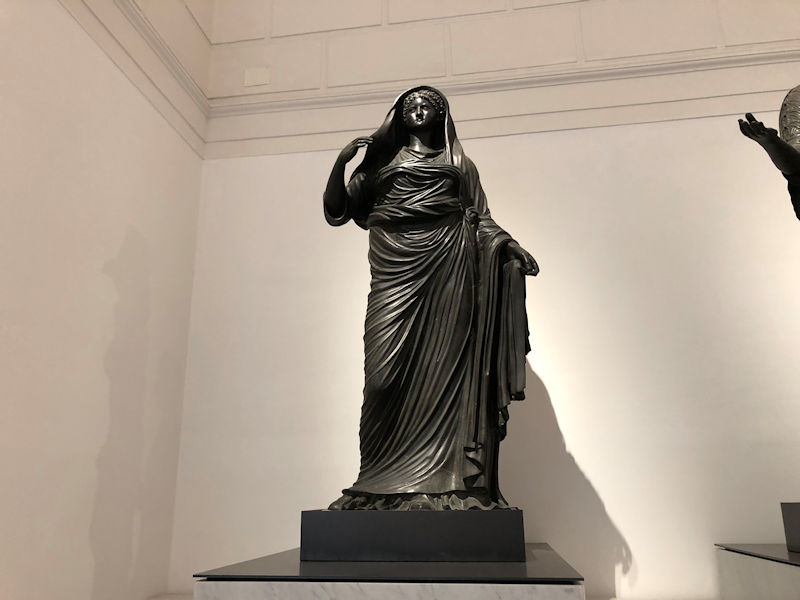
. . . this one, of Agrippina Minor, mother of Nero. Herculaneum, theatre, ca. mid-1st century AD
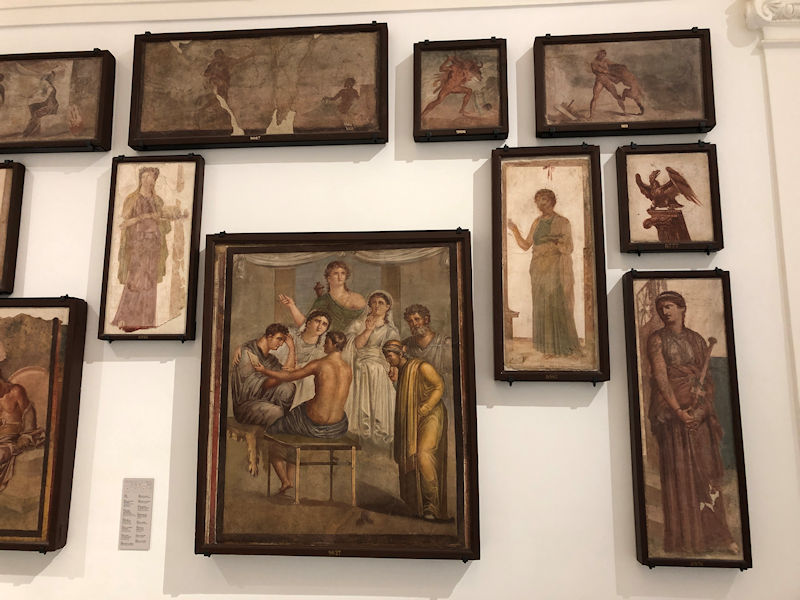
More frescoes
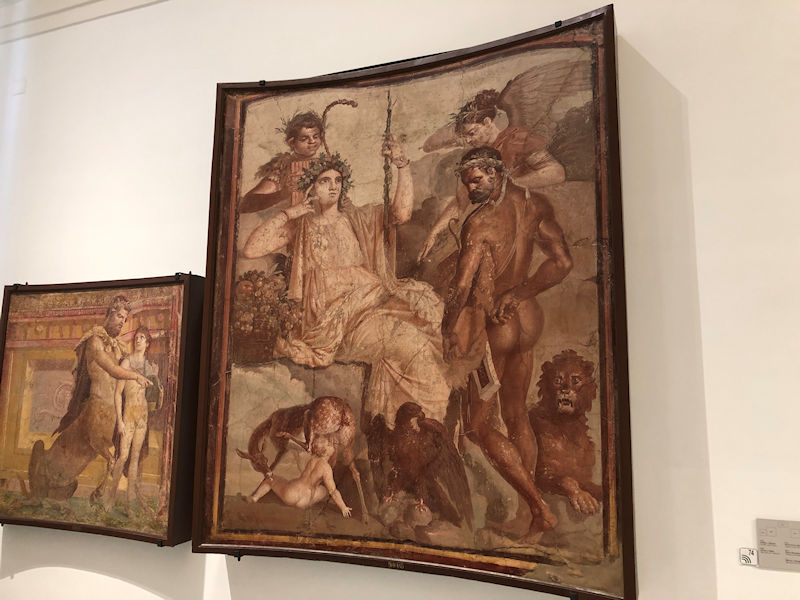
Not to be dissuaded!
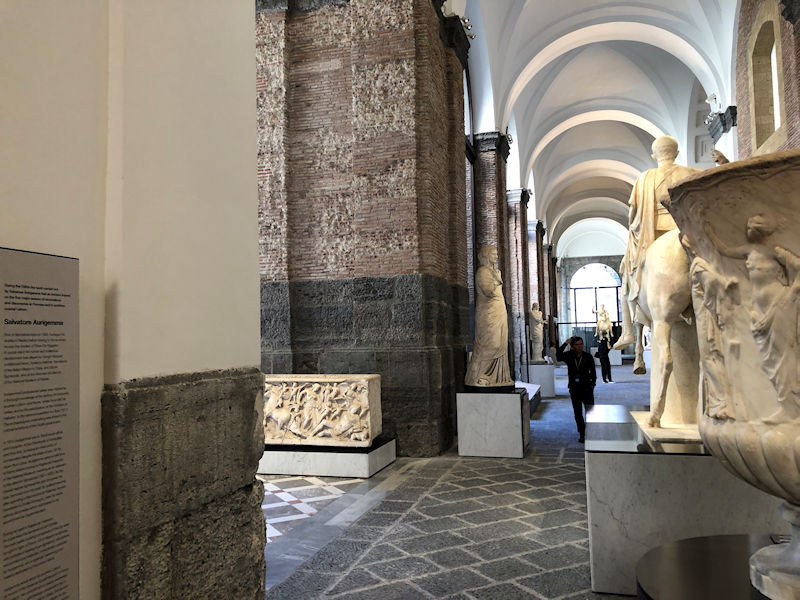
-- Don't get lost.
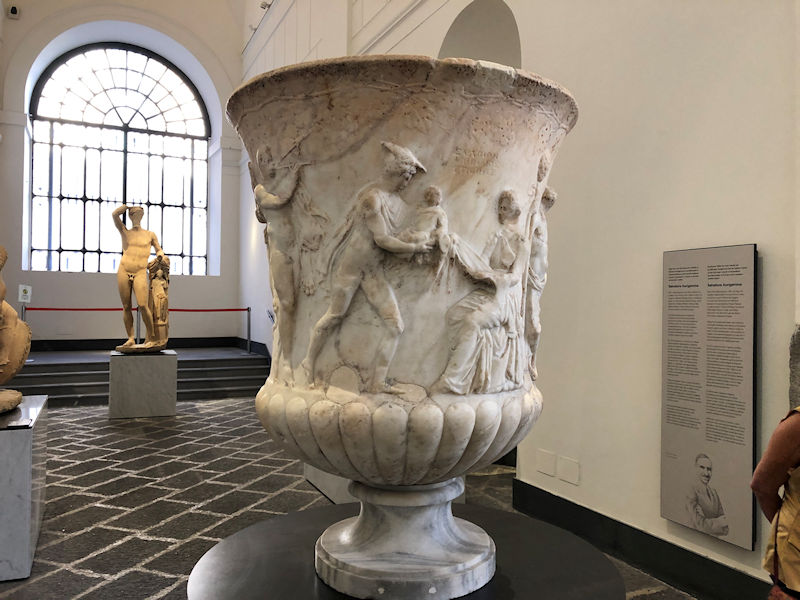
A krater showing the childhood of Dionysus - 'Hermes entrusts the infant Dionysus to a nymph seated on a rock'. Gaeta, 'reused in the cathedral as a baptismal font', mid-1st century BC
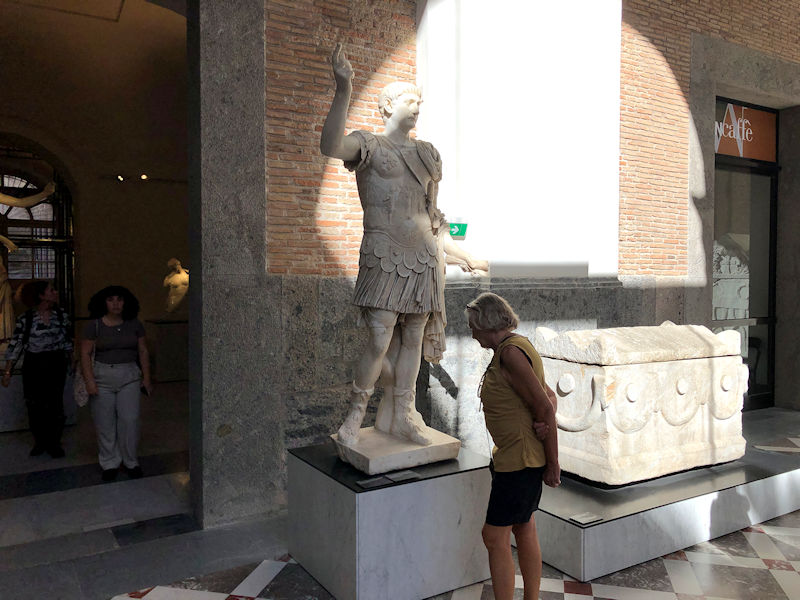
'Trajan. The head is not the original one' ('the scene on his cuirass shows a statue of Pallas Athena between two dancing girls'). The head was added during late 18th century restorations. Minturnae amphitheatre, early 2nd century.
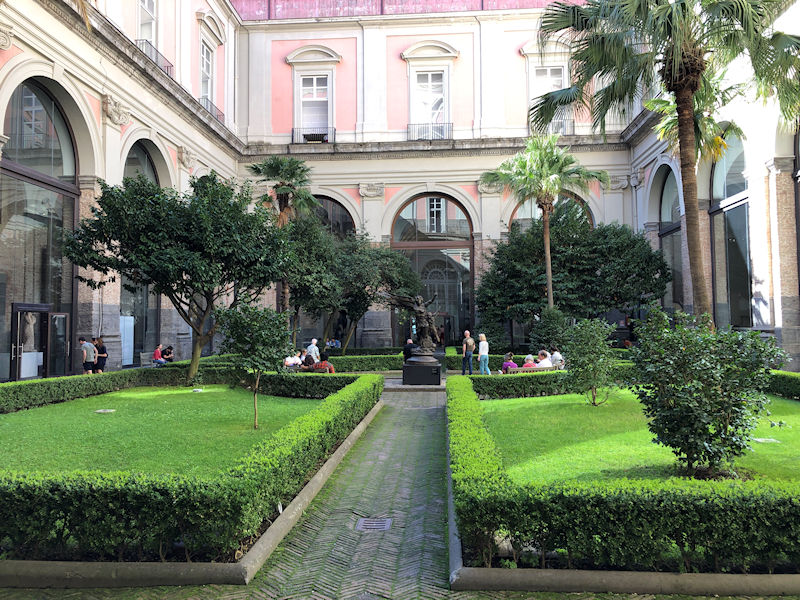
One of the two courtyards between the central corridor, leading to . . .
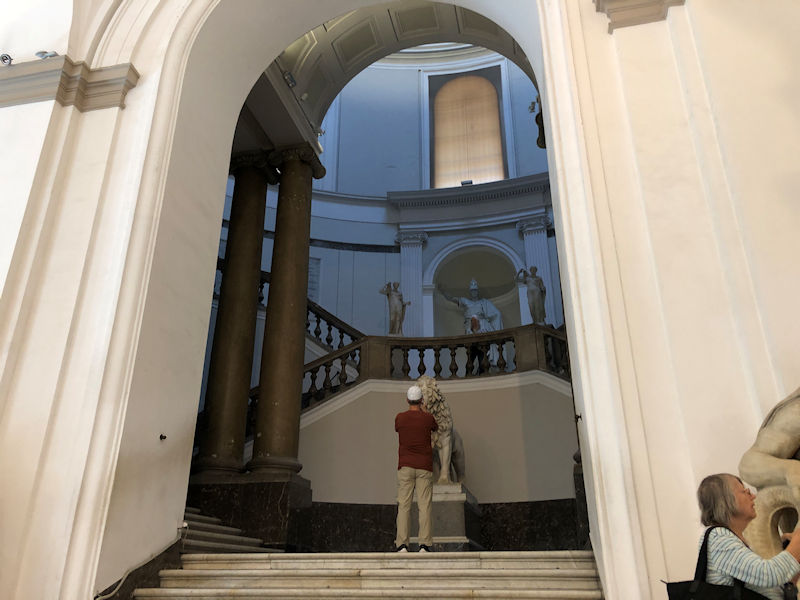
. . . the formal staircase up to more Good Stuff.
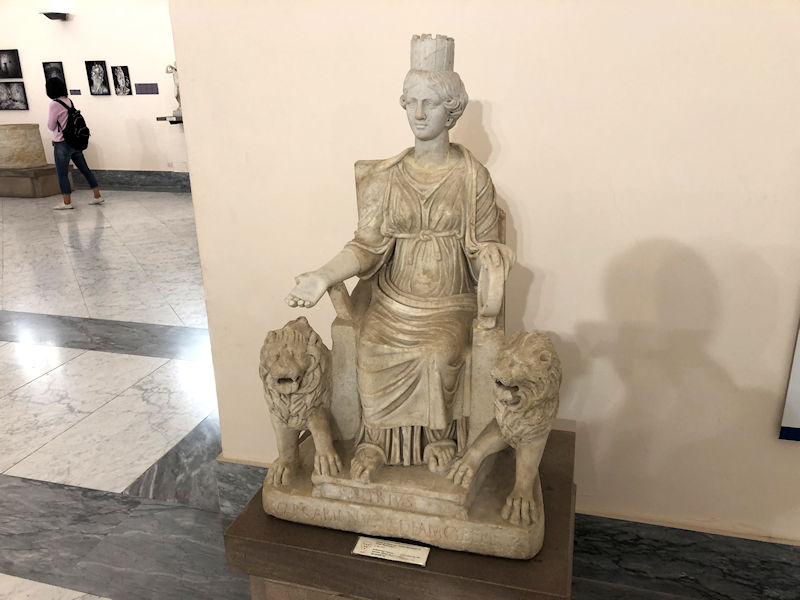
Enthroned Cybele, 3rd century BC, apparently from the Villa Farnesina [nice hat, doubtful choice of pets]
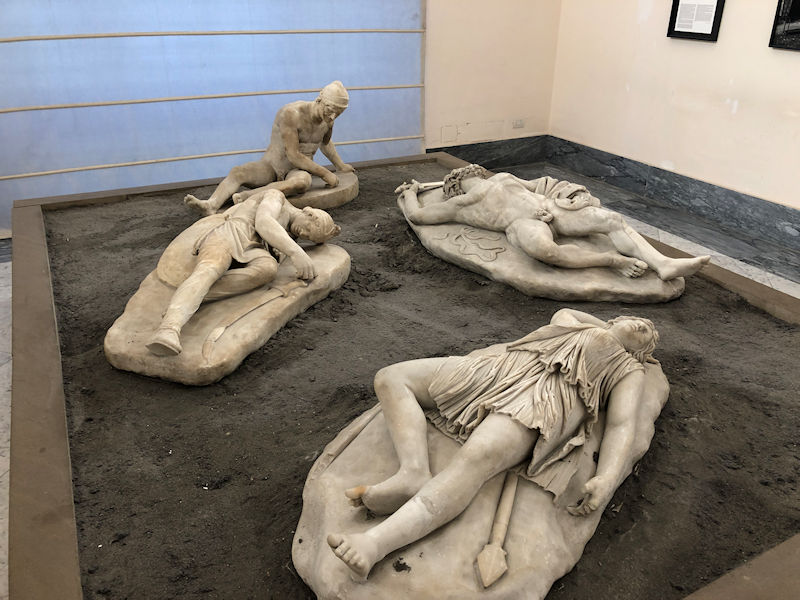
A grim battle scene
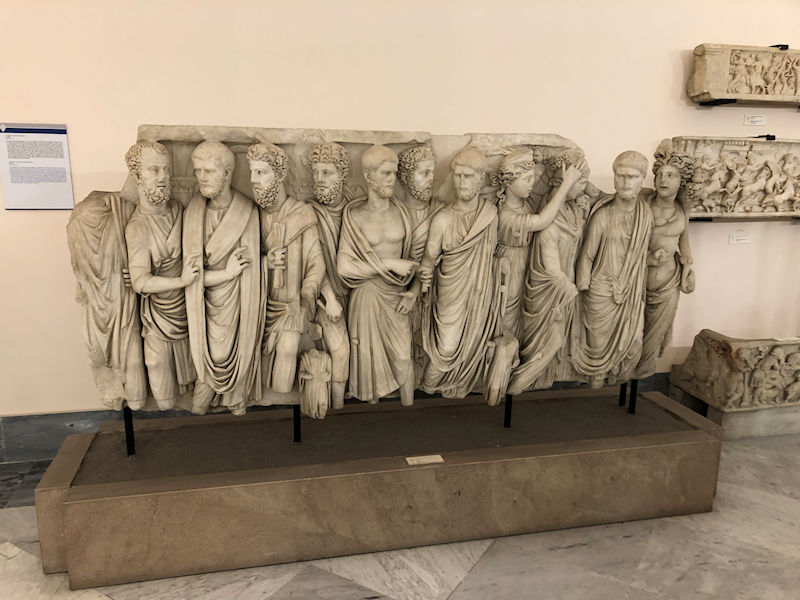
Boys night out (with a few females for company). 3rd century AD
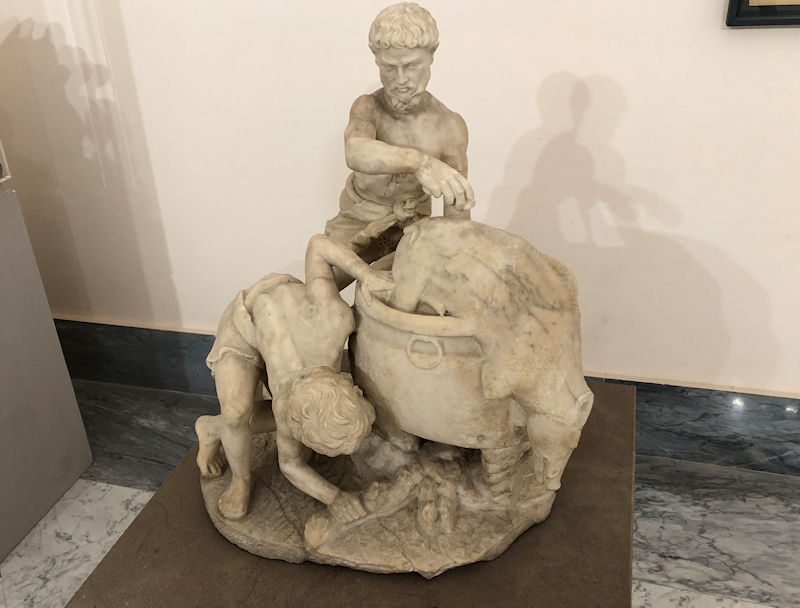
A veritable classic, 'the so-called roasting of the boar'. 1st century AD from a Hellenistic Greek original
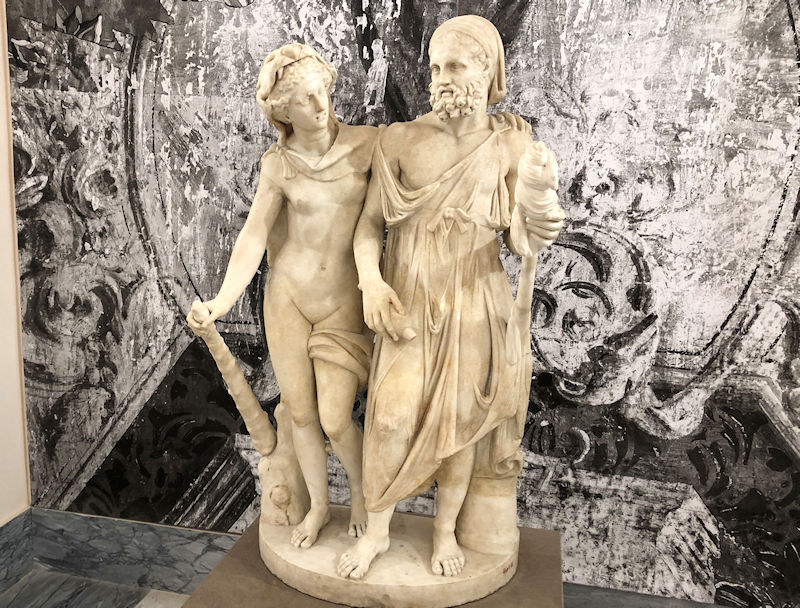
Hercules and an admiring lady friend (i.e., Omphalus). '1st century AD copy of an eclectic Roman creation of the late 1st century BC'
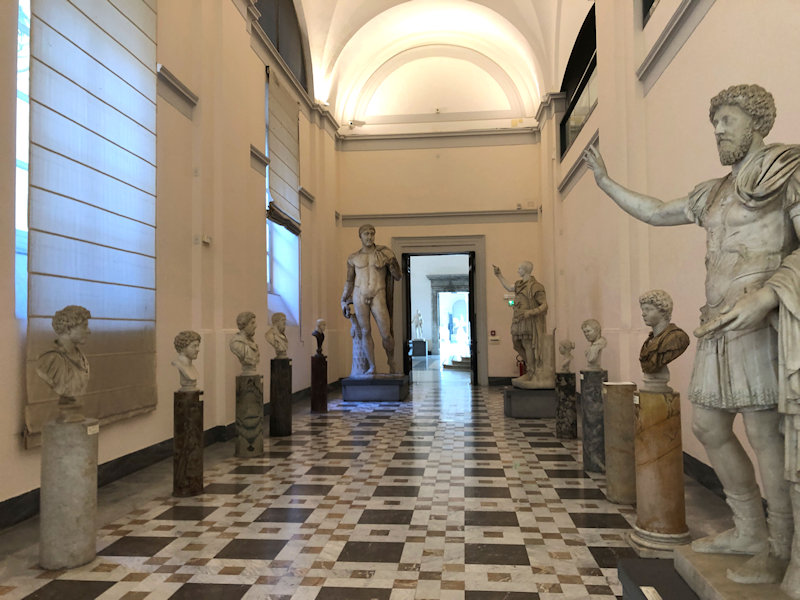
A corridor put to good use
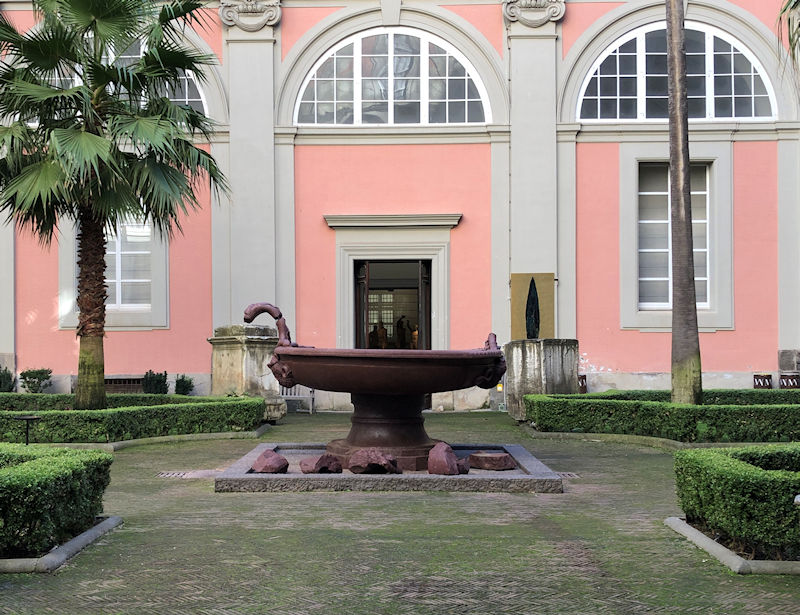
The other courtyard, with . . .
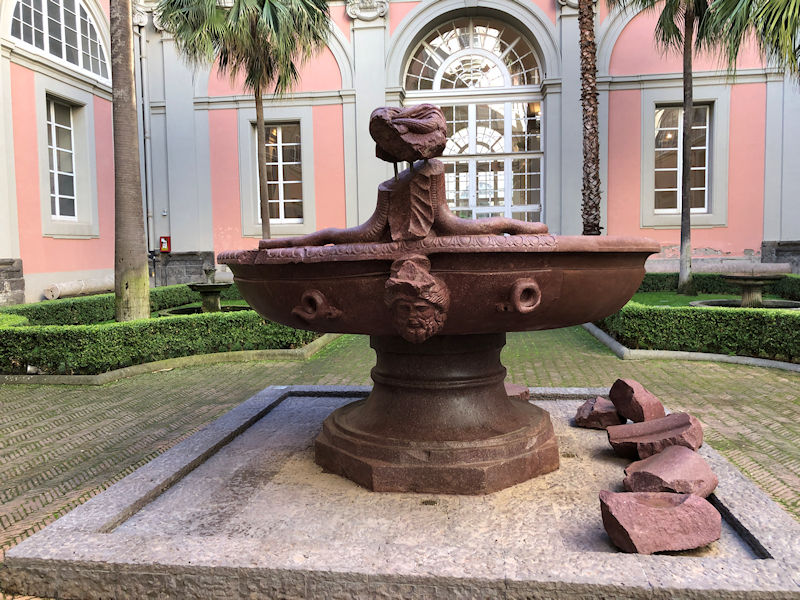
. . . a possibly meaningful exhibit
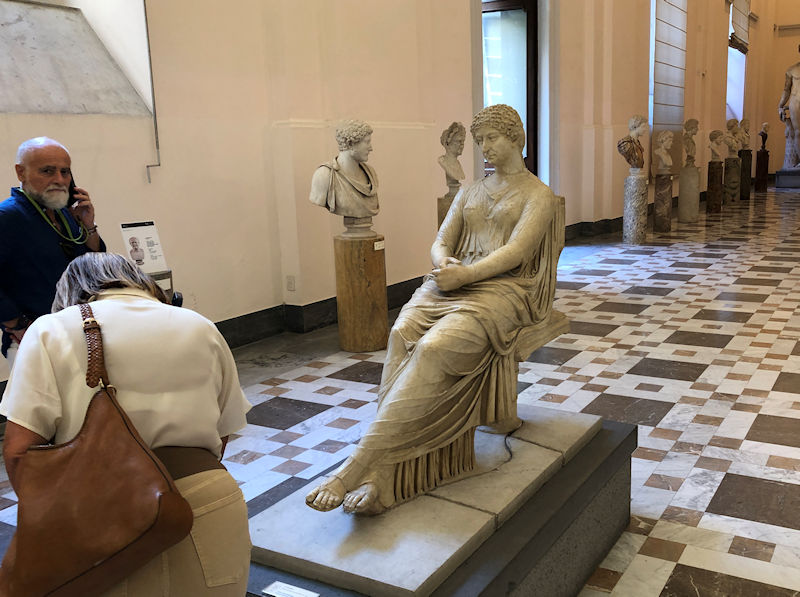
Easily a favorite -- 'you can't imagine what it's like having to sit here all day staring at the tourists. Especially when they ask you questions.' (The so-called Agrippina, 2nd half of the 1st century AD)
These are both apparently from the Baths of Caracalla excavations mounted by Pope Paul III in 1545.
(A Lar was 'a Genius, a protective and vital spirit of the Romans, who exercised his benign influence over every aspect and institution of their society'.)
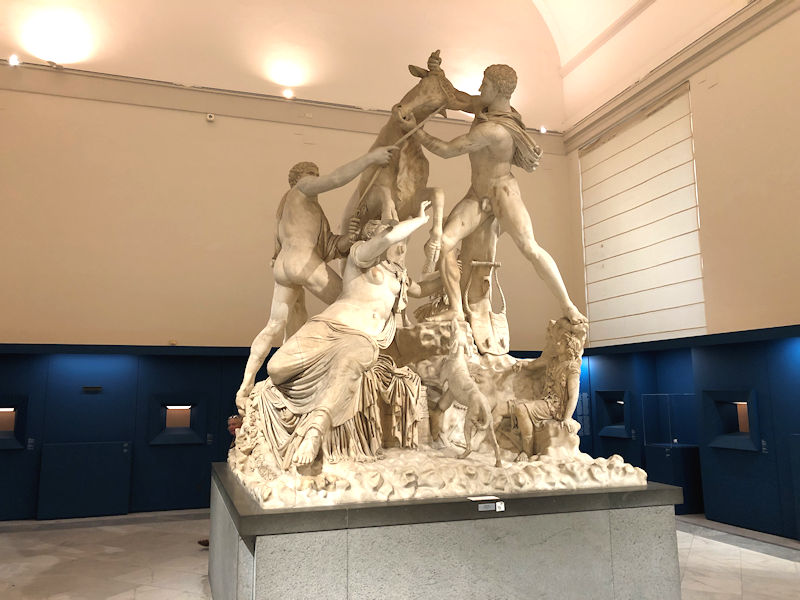
The famous Farnese Bull or Toro Farnese, from the Baths of Caracalla. 'By an artist of the first Severian age' -- i.e., AD 232-235 -- and also called (it says here) 'Group with the torment of Dirce'. Apparently found in fragments but made from a single block of marble.
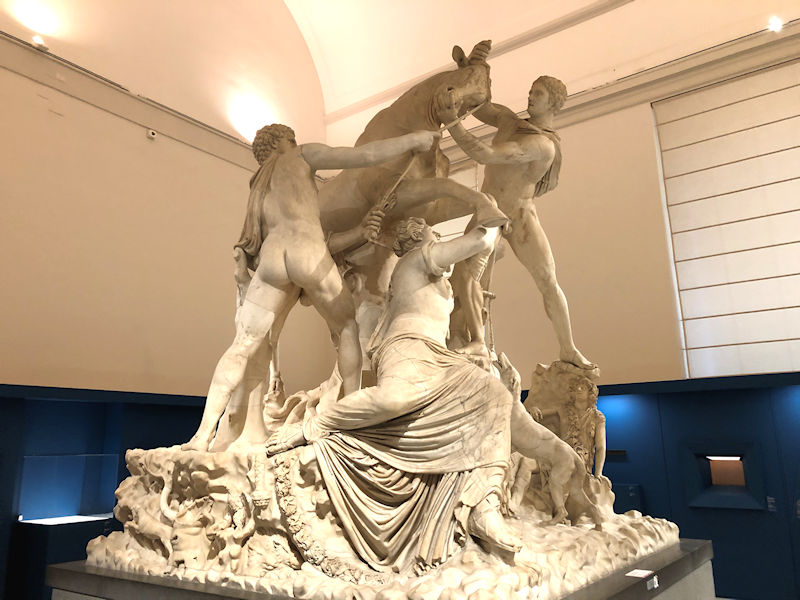
Said to be a copy of a Hellenistic original; Pliny the Elder said that the original was made by Rhodian artists in the late 2nd century BC. Years of restorations have used 'various qualities of marble'.
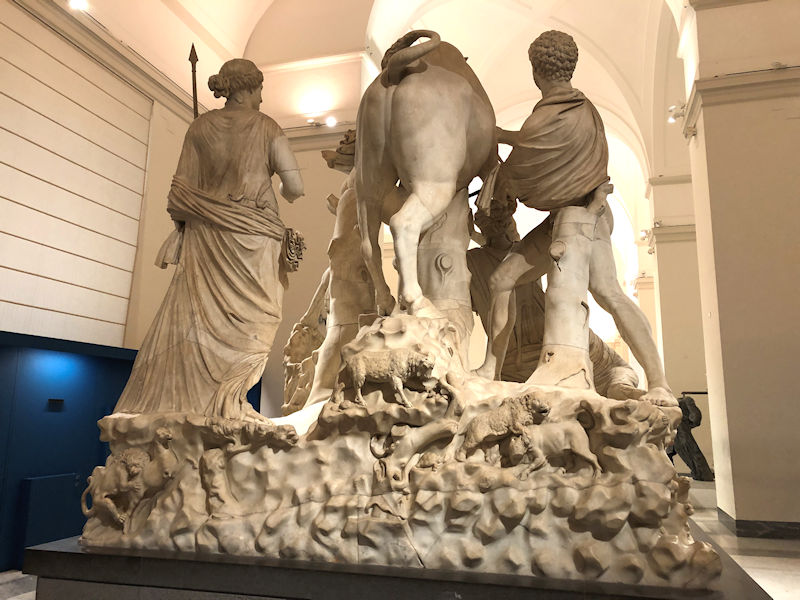
'This colossal marble sculptural group represents the myth of Dirce, first wife of Lykos, King of Thebes. She was tied to a wild bull by Amphion and Zethus, the sons of Antiope, who wanted to punish Dirce for the ill-treatment inflicted on their mother.'
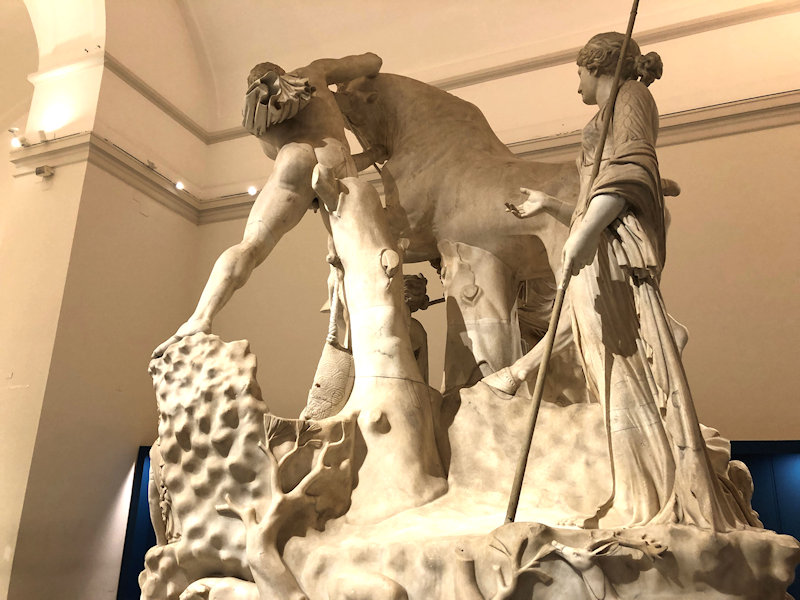
[Well made, but a pretty disgusting concept to start with, one would have thought]
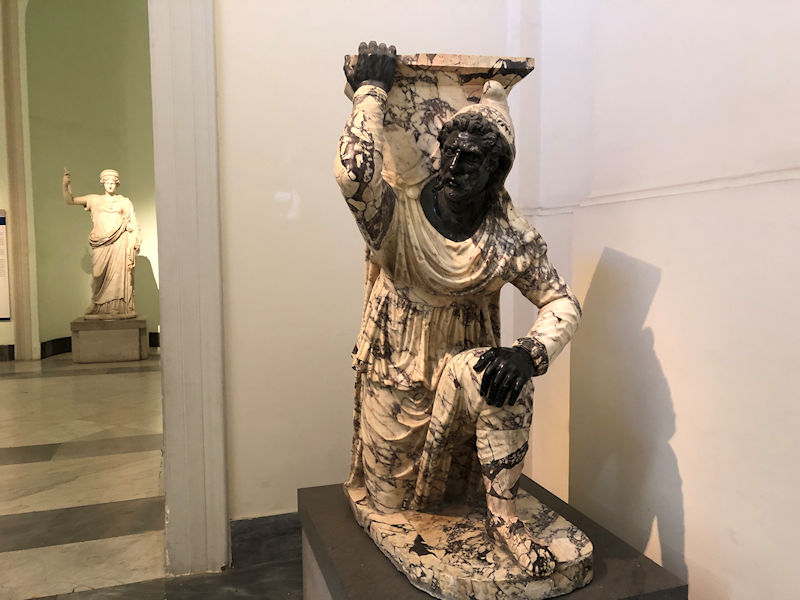
The Kneeling Barbarian, 'with head in nero antico', early 1st century AD.
[He's not just 'kneeling', he's hauling a great whacking load on his back.]
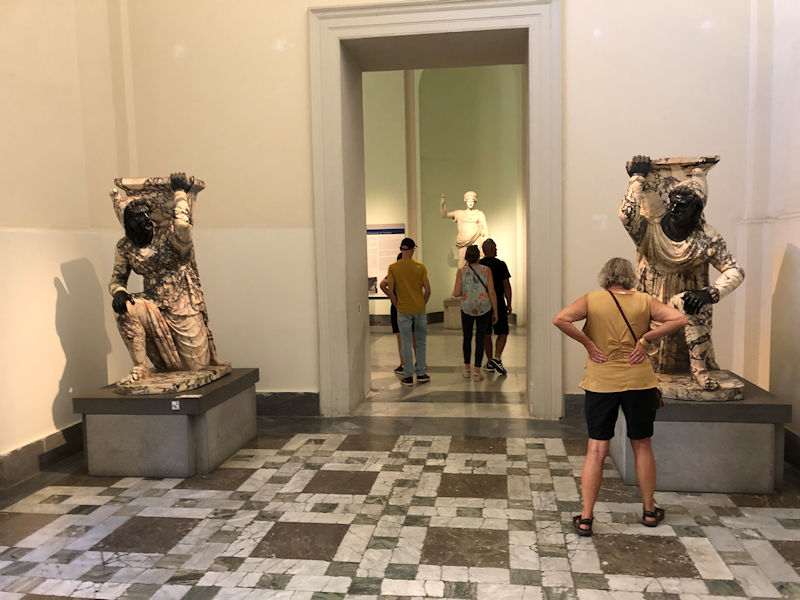
-- Oh, that can't have been fun.
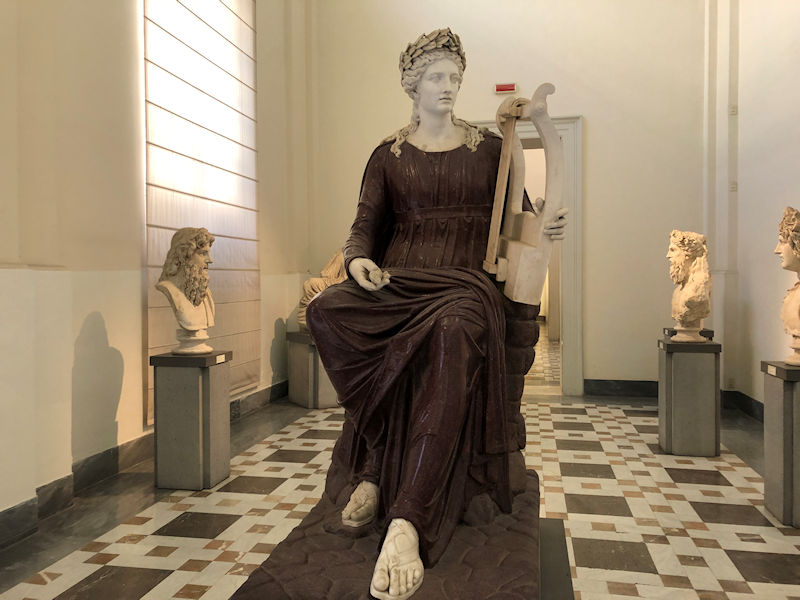
Apollo seated with a lyre, in porphyry, 2nd century AD. [That's a guy god?]
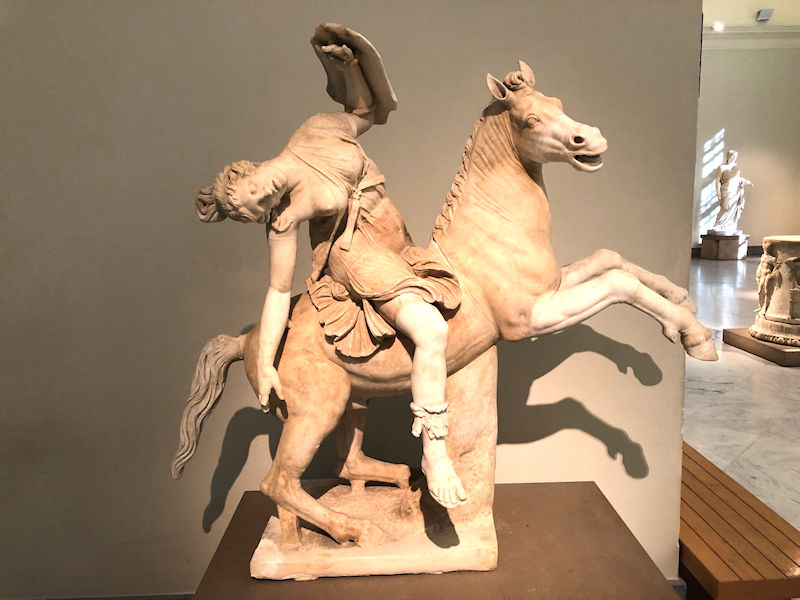
An Amazon warrior getting shot off a horse. An AD 2nd century copy of a 2nd century BC Greek original.
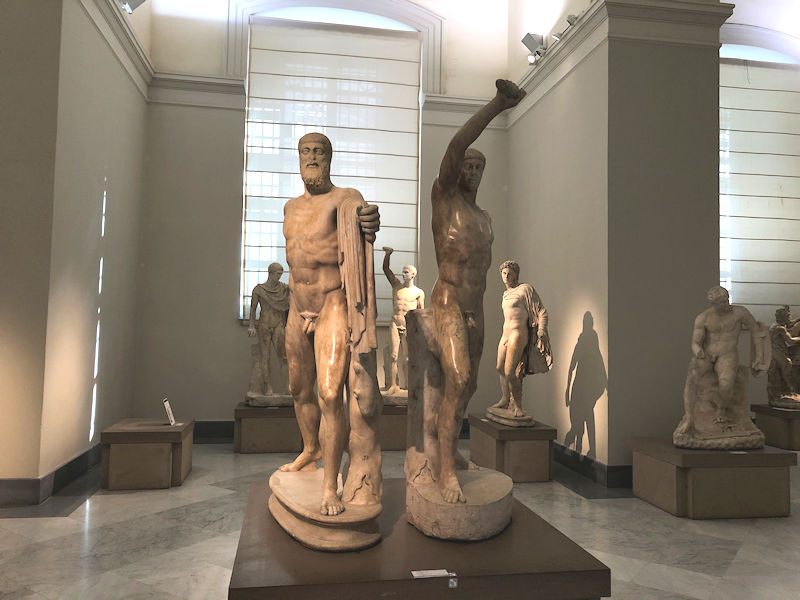
The Tyrannicides. An AD 2nd century marble copy of an original bronze from ca. 477 BC. ('The lovers Harmodius and Aristogeiton were Athenian heroes whose act of daring in 514 BC opened the way for Athenian democracy.'
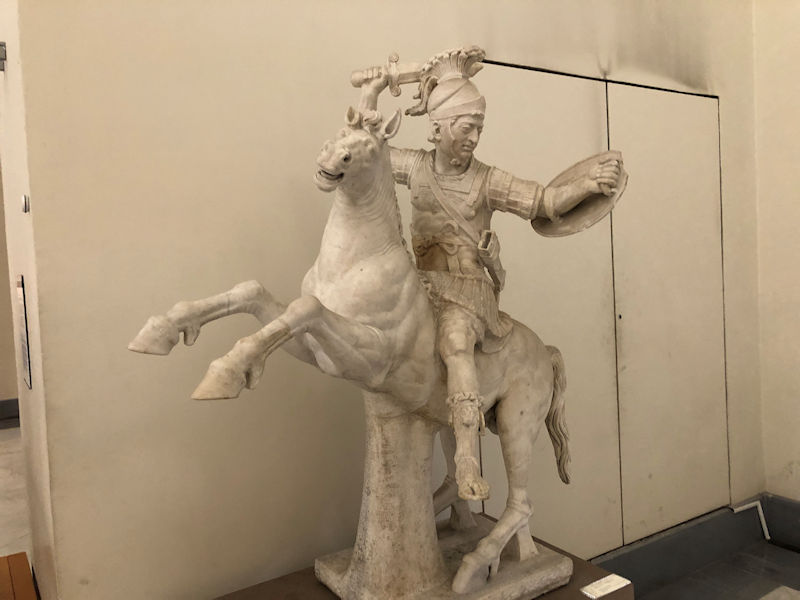
'Warrior on horseback' [thanks for that]. AD 2nd century copy of a 2nd century BC Greek original.
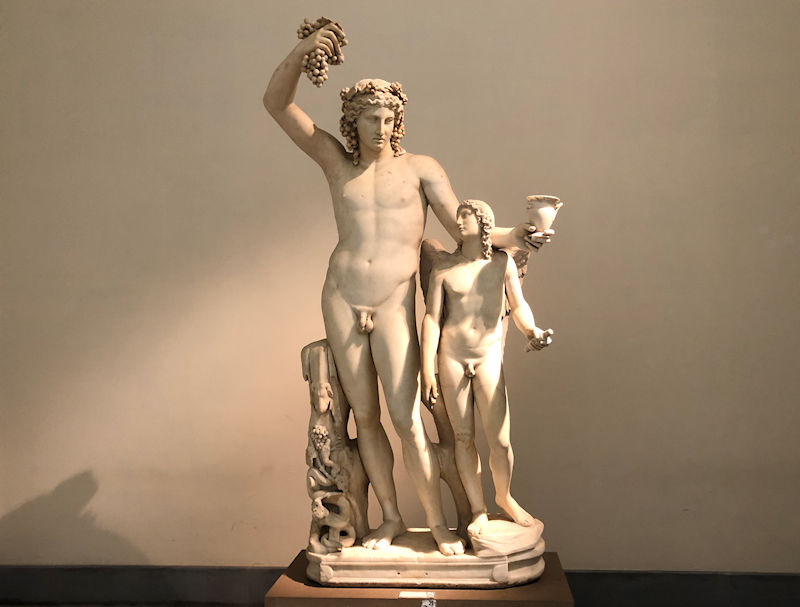
[Oh, here we go with the little boy thing again.]
Dionysus and Eros, 2nd century AD. (Those big bunches of grapes should have been a giveaway.)
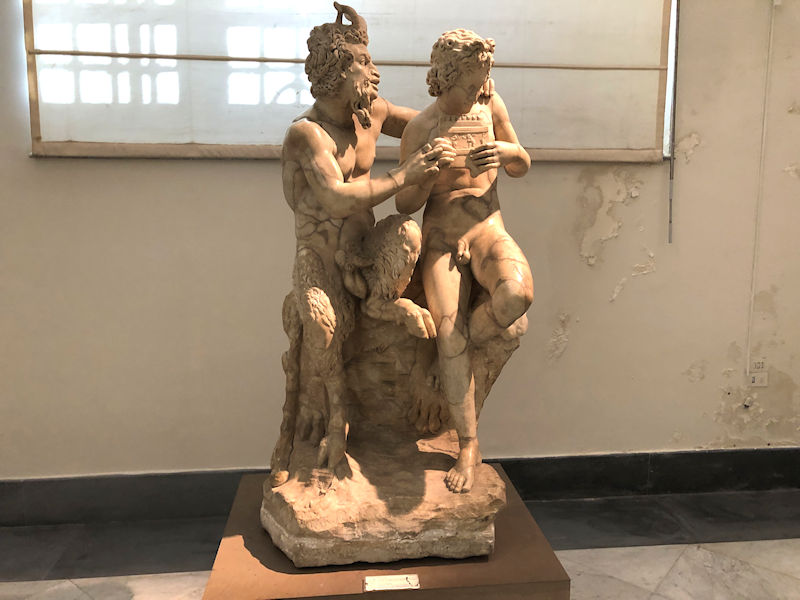
[Oh, for Pete's sake . . . ] Apparently that's a nasty satyr with the infant Dionysus.
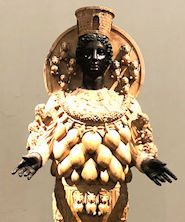 Dwight Peck's personal website
Dwight Peck's personal website